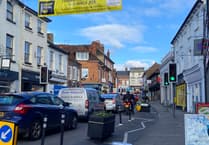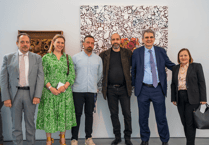Long before Covid-19, a combination of technology, lifestyle and market forces have slowly eroded the ‘traditional’ town centre.
Post-Covid, we need to ‘build back better’. We need to transform our town centres into sustainable destinations to visit, where retail is but one part of that experience.
In Godalming, we have taken advantage of the need for social distancing to pedestrianise as far as possible, closing the High Street to road traffic for most of the day. The difference is remarkable, and we hope to gather the evidence during this period to make it permanent.
I am not naive enough to think it would be easy to just shut down traffic flow through Farnham in the same way as we have elsewhere. The traffic volume is higher, and the road system more complex. Last Saturday, I met with the Farnham Extinction Rebellion group and other cycling stakeholders to hear their views and see for myself the recent changes in Farnham. What I saw was a Surrey Highways-led solution where cones and barriers dominate.
My generation are part of a growing number of citizens who try to avoid cars and to use public transport as much as possible. As a member of the Farnham Board I feel I can offer a perspective that might otherwise be missing.
However, some decisions will be out of the board’s hands. Farnham will either get money for big-ticket items like Hickleys Corner – or not.
On that point it requires Mr Hunt to deliver from his national colleagues. An updated Hickleys Corner project (updated to properly factor in cycling and other sustainable transport) is essential, but the real choices will be about what vision the community has for the future of Farnham.
However, we must first deal with the white elephants in the room: Brightwells and the Woolmead.
I hear many voices saying Brightwells must be reconsidered for the 21st century, and that its success is predicated on an outdated, retail-led model, which will only succeed by drawing business away from the other side of town.
The “book-ends” scenario of two focal points, Brightwells and Lion & Lamb Yard, with tumbleweed and charity shops in between, is a very real threat. The economics of the town centre (along with Covid) may force Crest and Surrey CC to recognise that change is needed. I, personally, am interested in exploring how the councils involved can wholly rethink this project if the contract is set aside.
With the Woolmead, the damage has already been done. Before the last local elections, Waverley passed an unsustainable application which included exactly zero affordable housing.
Unfortunately, we cannot undo this. For the revised application, parking spaces dominated the debate. Once again (as is often the case) Surrey CC seem to be living in a different universe to the rest of us in terms of transport and traffic in Farnham.
The application was rightly thrown out.
For Farnham to become a destination town centre, as it rightly expects and deserves, bold decisions about traffic management and sustainable transport are needed. This will require leadership with firm resolve – not just money.
The Farnham Board only needs the backing of the county council as the relevant highway authority – not for any input on local vision (unless your vision is one of cars, cones, and concrete). Quick wins for political gain will not suffice. Farnham’s future needs to be secured beyond the next county and parliamentary elections and that requires a considered and deliverable plan.
If the Farnham Board is to succeed, it first needs to shed an entrenched, 20th-century economic world view and embrace a new kind of town centre.





Comments
This article has no comments yet. Be the first to leave a comment.